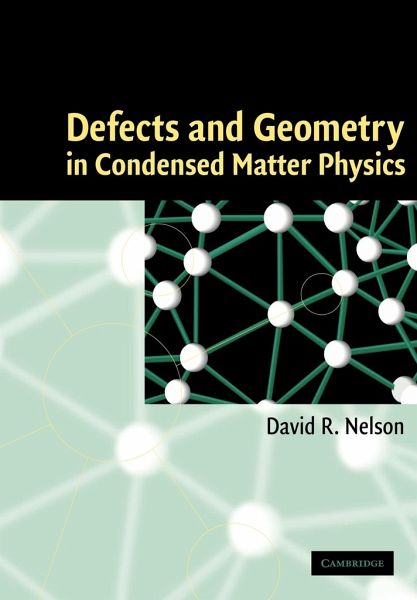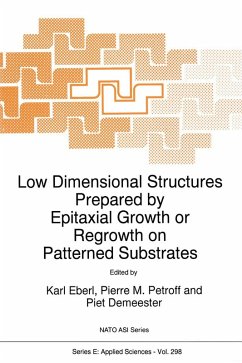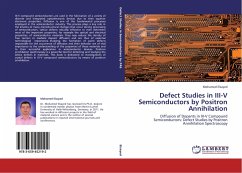
Defects and Geometry in Condensed Matter Physics

PAYBACK Punkte
46 °P sammeln!
Thermally excited defects such as vortices, disclinations, dislocations, vacancies and interstitials play a key role in the physics of crystals, superfluids, superconductors, liquid crystals and polymer arrays. Geometrical aspects of statistical mechanics become particularly important when thermal fluctuations entangle or crumple extended line-like or surface-like objects in three dimensions. In the case of entangled vortices above the first-order flux lattice melting transition in high temperature superconductors, the lines themselves are defects. A variety of low temperature theories combine...
Thermally excited defects such as vortices, disclinations, dislocations, vacancies and interstitials play a key role in the physics of crystals, superfluids, superconductors, liquid crystals and polymer arrays. Geometrical aspects of statistical mechanics become particularly important when thermal fluctuations entangle or crumple extended line-like or surface-like objects in three dimensions. In the case of entangled vortices above the first-order flux lattice melting transition in high temperature superconductors, the lines themselves are defects. A variety of low temperature theories combined with renormalization group ideas are used to describe the delicate interplay between defects, statistical mechanics and geometry characteristic of these problems in condensed matter physics. David Nelson provides a coherent and pedagogic graduate level introduction to the field of defects and geometry.
Table of contents:
1. Fluctuations, renormalization and universality; 2. Defect mediated phase transitions; 3. Order, frustration; 4. The structure and statistical mechanics of glass; 5. The statistical mechanics of crumpled membranes; 6. Defects in superfluids, superconductors and membranes; 7. Vortex line fluctuations in superconductors from elementary quantum mechanics; 8. Correlations and transport in vortex liquids; 9. The statistical mechanics of directed polymers.
Graduate-level textbook discussing the crucial role played by defects and geometry in disrupting order in solids, superconductors, superfluids, liquid crystals and polymers.
A pedagogic graduate level introduction to the field of defects and geometry.
Table of contents:
1. Fluctuations, renormalization and universality; 2. Defect mediated phase transitions; 3. Order, frustration; 4. The structure and statistical mechanics of glass; 5. The statistical mechanics of crumpled membranes; 6. Defects in superfluids, superconductors and membranes; 7. Vortex line fluctuations in superconductors from elementary quantum mechanics; 8. Correlations and transport in vortex liquids; 9. The statistical mechanics of directed polymers.
Graduate-level textbook discussing the crucial role played by defects and geometry in disrupting order in solids, superconductors, superfluids, liquid crystals and polymers.
A pedagogic graduate level introduction to the field of defects and geometry.














